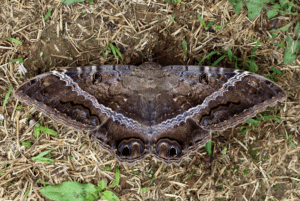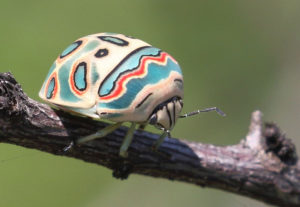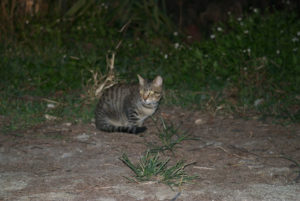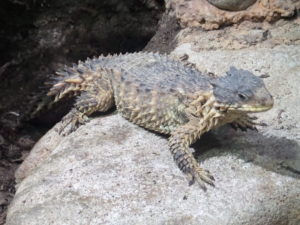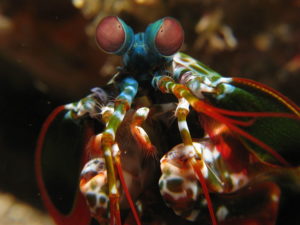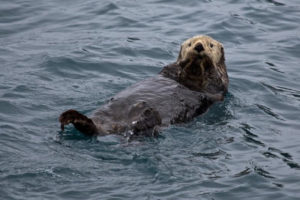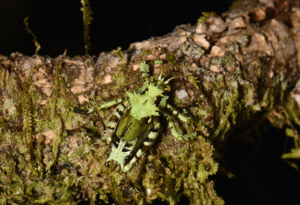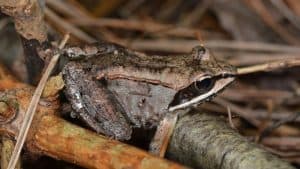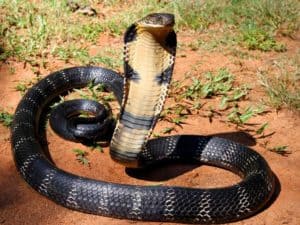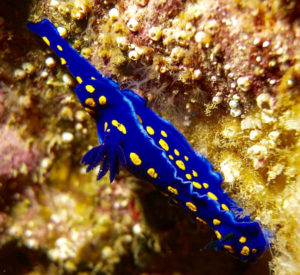Black Witch Moth Facts Related Articles Black Witch Moth Physical Description Most of its numerous relatives around the world seem content to impress observers based on one trait alone, but not the magnificent Black Witch Moth. That’s because this Lepidoptera merits appreciation due to both its appearance and size. This insect shines in terms of both […]
Picasso Bug
Picasso Bug Facts Related Articles Picasso Bug Physical Description Although the truly gorgeous Picasso Bug attains a roughly average size for an arthropod of its kind, it nonetheless remains a physically small insect. However, its numerous other attributes more than make up for any perceived lack of physical size. In this manner, the magnificent work […]
Iriomote Cat
Iriomote Cat Facts Related Articles Iriomote Cat Physical Description The beautiful Iriomote Cat certainly catches the eye of anyone fortunate enough to encounter one of the marvels. It does so for several reasons, though. Its appearance remains intriguing, since it looks much like a common house cat. But its sheer size remains slightly greater than […]
Golden Armadillo Lizard
Golden Armadillo Lizard Facts Related Articles Golden Armadillo Lizard Physical Description Perhaps most notably, the extremely fascinating Golden Armadillo Lizard remains a moderately sized reptile. Yet that fact does not diminish its truly fascinating nature. That’s because what the impressive creature lacks in size it more than makes up for in other ways. In appearance, […]
Mantis Shrimp
Mantis Shrimp Facts Related Articles Mantis Shrimp Physical Description Quite understandably, given the large number of types of Mantis Shrimp, physical differences exist. Certain natural traits remain consistent among all recognized species in the fabulous suborder, however. That’s the very basis of the common grouping, in fact. Since Nature loves variety, the various species display […]
Sea Otter
Sea Otter Facts Related Articles Sea Otter Physical Description The Sea Otter ranks as one of the smallest species of marine mammals. However, it also represents the heaviest known type of mustelid. The species displays a small degree of sexual dimorphism, with males being larger than females. Adult males average about 75 lb (34 kg) but sometimes […]
Lichen Katydid
Lichen Katydid Facts Lichen Katydid Physical Description The remarkable Lichen Katydid carries the principle of camouflage further than any other known species of katydid. Further, its body primarily displays varying shades of green in color. Also, all portions of the body possess spindly protrusions. These aid in creating the appearance of the lichen it inhabits […]
Wood Frog
Wood Frog Facts Related Articles Wood Frog Physical Description The amazing Wood Frog never fails to fascinate those who know of its incredible attributes. These, though, have nothing to do with its size or visual appeal. Evolution provided it with extraordinary traits regardless of any of these so-called normal qualities. Though sincerely incredible in some […]
King Cobra
King Cobra Facts Related Articles Source: http://bit.ly/2DahOUf Photo: Marathekedar93 CCL: http://bit.ly/2zBWbKi King Cobra Physical Description The mesmerizing King Cobra immediately captures the attention of those who encounter it, especially in the wild. That’s true due to combination of several reasons, however. Given its notorious reputation, most people recognize it on sight. It also impresses people […]
California Blue Dorid
California Blue Dorid Facts Related Articles California Blue Dorid Physical Description First of all, it must be pointed out that, although the gorgeous California Blue Dorid stands out, it does not do so due to sheer physical size. That holds true, in point of fact, due to the fact that the gastropod ranks as only […]
